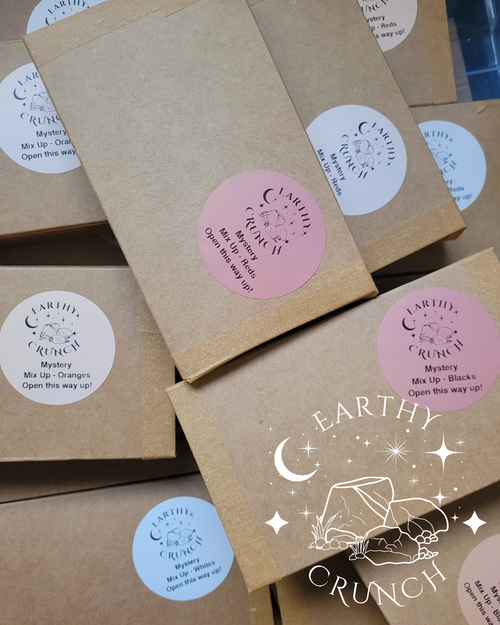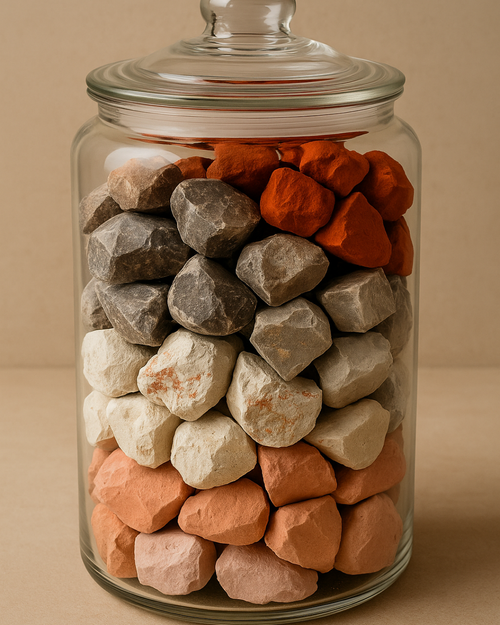The world of edible clays may feel timeless and earthy, but it's far from immune to the whims of weather. From scorching heat to relentless monsoon rains, the climate plays a huge role in how your favourite natural clays are harvested, dried, stored, and shipped. If you've ever wondered why some clays vanish from stock during certain months—or arrive tasting slightly different—the weather might just be behind it.
Sun, soil, and seasonality
Many edible clays are harvested in open-air environments, sun-dried naturally, and stored without heavy processing. This makes them beautifully raw and authentic—but also highly sensitive to seasonal changes. Sunlight helps dry clay evenly and completely, giving it that satisfying snap and clean flavour. On the flip side, excessive humidity can delay drying, cause clumping, and dull the crispness we crave.
High humidity doesn’t just affect drying at the source—it can also wreak havoc in transit or at home. If your stash starts feeling soft, sticky, or oddly chewy, there’s a good chance moisture in the air is to blame.
The monsoon disruption in India
India is one of the world’s largest sources of edible clays, supplying beloved varieties like dryfruit clay, multani mitti, and terracotta crunches. But between June and September, much of the country experiences the southwest monsoon—a dramatic shift in weather that brings heavy rainfall, high humidity, and logistical chaos.
Here’s how monsoon season affects edible clays:
-
Delayed harvesting: Clay pits become waterlogged or inaccessible.
-
Slower drying times: Sun-drying becomes near impossible, increasing the risk of mould or spoilage.
-
Textural changes: Clays may feel softer, more crumbly, or retain moisture even after drying.
-
Stock shortages: Transport and shipping are often disrupted, leading to patchy availability.
-
Batch variability: Even when clay is processed during this time, it may taste or feel different due to the changed environment.
For small-scale makers and collectors, this season can mean months of paused production or inconsistent output. For global fans of edible earth, it means patience—and maybe a little stockpiling before the rains come.
Humidity at home: why storage matters
Even after clay reaches your hands, weather can still interfere. In the UK, summer humidity spikes or damp storage areas can soften even the crunchiest batch. To keep your stash at its best:
-
Store in airtight containers—preferably glass or hard plastic
-
Add silica gel packs or natural desiccants to absorb excess moisture
-
Keep your clay in a cool, dry place away from direct heat or steam (yes, that includes the kitchen)
-
Avoid touching pieces with damp hands or utensils
A little care goes a long way in preserving that signature snap.
Adapting to nature’s rhythms
At Earthy Crunch UK, we work closely with our suppliers to monitor climate-related shifts and adapt our sourcing accordingly. While we can’t change the weather, we do believe in respecting the natural rhythms that shape these earthy treasures. That sometimes means limited drops, subtle texture differences, or higher costs during the wetter months—but it also means staying true to the real, raw nature of the clay.
Final thoughts
Edible clays are a gift from the earth—and the earth has seasons. The next time your favourite crunch is delayed or tastes slightly different, it might just be a monsoon away. Nature is part of the process, and that's what makes each batch a little bit special.
Stay patient. Stay curious. Stay earthy.
Special thanks to Chris @YummyClays for requesting this blog and Anoothi @CAA for sharing a little info a while back on how the weather can impact and delay production



0 comments